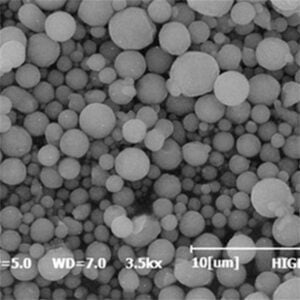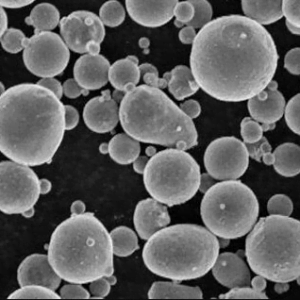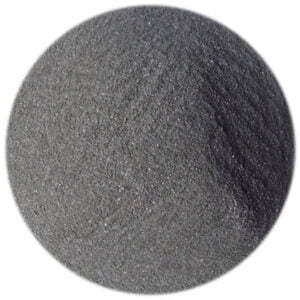3D printing metal Powder: Detailed processing of Water Atomization
Table of Contents
The world of 3D printing metal Powder has revolutionized various industries, enabling the creation of complex and intricate objects layer by layer. But have you ever wondered about the magic behind the materials used in this process? In the case of 3D metal printing, the answer lies in metal powders: tiny, finely-granulated metallic particles that serve as the building blocks for these incredible creations.
This article delves deep into the fascinating process of water atomization, a key method for producing high-quality metal powders specifically for 3D printing metal Powder applications. So, buckle up and get ready to dive into the heart of this innovative technology!
Melting the Metal: Setting the Stage for Transformation
The journey begins with the melting of the desired metal feedstock. This is typically achieved in a crucible furnace using various methods like induction heating or electrical resistance heating, depending on the metal’s properties and melting point. Imagine a giant pot heating up your favorite metal, transforming it from a solid to a molten liquid, ready to be shaped into something extraordinary.
Key considerations during melting:
Metal selection: Different metals require specific melting temperatures and techniques. Choosing the right approach ensures the metal maintains its desired properties throughout the process.
Crucible material: The crucible needs to be compatible with the chosen metal and withstand the high temperatures involved. Think of it as a special container that can handle the molten metal without reacting with it.
Contamination control: Keeping the molten metal free from impurities is crucial. Even small amounts of contamination can significantly impact the final powder’s quality and printability. Picture baking a cake; a few stray ingredients can alter the entire taste and texture!
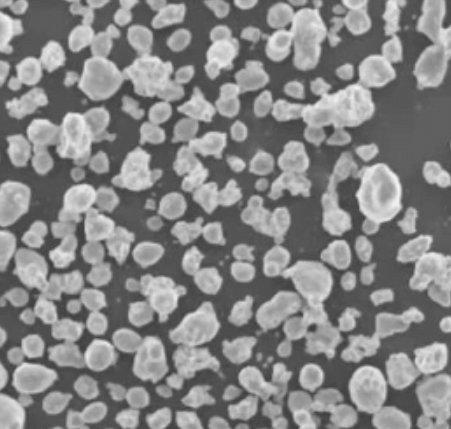
Pouring and Pre-Atomization: Preparing for the Split
Once the metal reaches its molten state, it’s time to pour it through a specific nozzle into a chamber designed for the atomization process. This pouring stage plays a vital role in ensuring a consistent flow of the molten metal for efficient atomization.
Pre-atomization: Before the main event, the molten metal stream might undergo pre-atomization using techniques like gas atomization or centrifugal atomization. This step helps in breaking down the metal stream into larger droplets, preparing them for the final transformation into fine powder particles. Think of it as pre-chopping vegetables before throwing them into a food processor. It makes the final blending process smoother and more efficient.
The Heart of the Matter: The Water Atomization Process
Now comes the showstopper: water atomization. This stage involves high-pressure water jets strategically aimed at the molten metal stream. As the water jets collide with the molten metal, they shatter it into tiny droplets, which rapidly solidify due to the sudden exposure to the cooler water environment. These solidified droplets become the coveted metal powder particles.
Imagine this: Picture a powerful water gun spraying a hot chocolate stream, breaking it down into tiny chocolate chips. That’s essentially what happens in water atomization, but with much higher pressure and molten metal instead of delicious treats!
Factors influencing particle size and morphology:
Water pressure: Higher pressure leads to smaller and more spherical powder particles, while lower pressure results in larger and potentially irregular shapes. Imagine using a stronger spray versus a gentle mist; the stronger spray will break down the chocolate stream into finer pieces.
Nozzle design: The design of the water nozzle plays a crucial role in directing the water jets and influencing the resulting particle size and distribution. Just like different spray nozzle attachments on a garden hose can create different watering patterns, the nozzle design in water atomization affects the final powder characteristics.
Classification and Collection: Sorting the Treasures
The atomized metal powder is then collected in a water tank where it cools down further. Subsequently, the powder undergoes a classification process. This involves separating the powder particles based on their size and shape using techniques like sieving or air classification. Imagine sorting a bag of mixed nuts; classification in water atomization is like separating the cashews from the peanuts based on their size and shape.
Classification ensures:
- Consistent powder flow: Uniformly sized particles are essential for smooth and efficient flow during the 3D printing metal Powder process, similar to how smoothly flour flows compared to a bag of mixed nuts.
- Desired printability: Specific applications might require powders with particular size and shape characteristics to achieve optimal printing results.
Post-Processing: The Final Touches
After classification, the metal powder might undergo further post-processing steps like drying to remove any residual moisture and degasification to eliminate trapped gases within the particles. These steps are crucial for ensuring the powder’s purity, flowability, and printability. Imagine baking the sorted nuts to remove any moisture and ensuring they’re free of air pockets for optimal storage and use.
Additional considerations in post-processing:
Surface modification: In some cases, the powder surface might be coated with specific agents to improve its flowability, adhesion, or other desired properties. This can be likened to adding a light dusting of flour or cocoa powder to baking ingredients to enhance their performance in the recipe.
Quality control: Throughout the entire process, rigorous quality control checks are implemented to ensure the produced metal powder meets the strict specifications for 3D printing metal Powder applications. This involves analyzing the powder’s chemical composition, particle size distribution, flowability, and other critical properties. Think of it as checking the quality of your baked goods before indulging; quality control in water atomization ensures the final powder is fit for creating high-quality 3D printed parts.
Advantages of Water Atomization for 3D printing metal Powder
Cost-effectiveness: Compared to other metal powder production methods like gas atomization, water atomization generally offers a more cost-efficient solution. This is due to factors like the readily available and inexpensive nature of water as the atomization medium.
High production rate: Water atomization boasts a higher production rate compared to other methods, making it suitable for large-scale production of metal powders. Imagine a factory churning out more batches of “metal cookies” efficiently with water atomization.
Wider range of materials: Water atomization can be used to produce metal powders from a broader range of materials, including low-alloy steels, stainless steels, and tool steels. This versatility opens doors to a wider variety of applications in 3D metal printing.
Limitations of Water Atomization
Particle shape: Compared to gas atomization, water-atomized powders tend to have a less spherical shape and a rougher surface. This can impact the flowability and packing density of the powder, potentially affecting the final properties of 3D printed parts.
Environmental considerations: The water used in the process needs to be treated and recycled to minimize the environmental impact. Similar to responsible disposal of used cooking oil, proper water management is crucial in water atomization.
Applications of Water-Atomized Metal Powders
Water-atomized metal powders find extensive use in various 3D printing metal Powder applications, including:
Aerospace: Manufacturing lightweight and high-strength components for aircraft and spacecraft. Imagine creating lighter, stronger parts for airplanes, potentially leading to improved fuel efficiency and performance.
Automotive: Producing complex and customized components for automobiles, such as engine parts and gears. Think of 3D printing custom gear parts for racing cars or creating innovative engine components with intricate designs.
Medical: Fabricating intricate medical devices like implants and prosthetics. Imagine creating personalized prosthetics or implants that perfectly match a patient’s needs and anatomy through 3D printing.
Tooling: Developing customized tools and molds for various industrial applications. Think of 3D printing specialized tools for specific manufacturing tasks, potentially leading to increased efficiency and innovation.
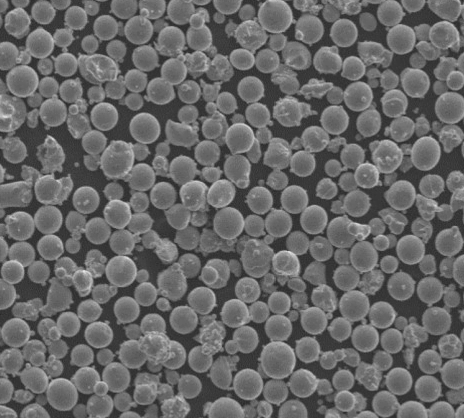
Conclusion: The Future of Water Atomization in 3D Printing
Water atomization plays a vital role in the production of metal powders for 3D printing metal Powder, offering a cost-effective and versatile solution for various applications. With ongoing advancements in technology and process optimization, we can expect water atomization to continue evolving, enabling the creation of even more sophisticated and high-performance metal powders for the future of 3D printing.
This fascinating technology paves the way for a future where complex metal objects can be created on-demand, revolutionizing various industries and pushing the boundaries of what’s possible in the realm of manufacturing.
FAQs
What are the different types of metal powders used in 3D printing?
In addition to water-atomized powders, gas-atomized powders and other specialized types like plasma-atomized powders are also used in 3D printing. Each type has its own advantages and limitations, making them suitable for different applications.
What are the key factors to consider when choosing a metal powder for 3D printing?
The choice of metal powder depends on various factors, including the desired material properties, application requirements, printing technology, and budget.
How does the quality of the metal powder impact the final 3D printed part?
The quality of the metal powder plays a crucial role in the strength, surface finish, and overall performance of the final 3D printed part. High-quality powders lead to superior results in terms of these critical aspects.
Is water atomization an environmentally friendly process?
While water atomization offers several advantages, it’s crucial to consider its environmental impact. The process utilizes large volumes of water, which needs to be treated and recycled to minimize water usage and prevent environmental pollution. Additionally, the energy consumption involved in the process needs to be addressed for sustainable production practices.
Ongoing efforts are focused on:
- Developing closed-loop water systems to minimize water usage and maximize recycling.
- Exploring alternative atomization methods that utilize less water or more environmentally friendly mediums.
- Optimizing energy efficiency throughout the process to reduce the overall environmental footprint.
By addressing these challenges and implementing sustainable practices, the future of water atomization can be shaped for responsible and environmentally conscious production of metal powders for 3D printing.
Share On
MET3DP Technology Co., LTD is a leading provider of additive manufacturing solutions headquartered in Qingdao, China. Our company specializes in 3D printing equipment and high-performance metal powders for industrial applications.
Inquiry to get best price and customized Solution for your business!
Related Articles
About Met3DP
Recent Update
Our Product
CONTACT US
Any questions? Send us message now! We’ll serve your request with a whole team after receiving your message.

Metal Powders for 3D Printing and Additive Manufacturing
COMPANY
PRODUCT
cONTACT INFO
- Qingdao City, Shandong, China
- [email protected]
- [email protected]
- +86 19116340731










